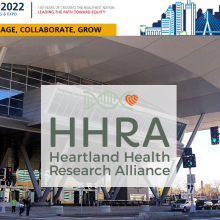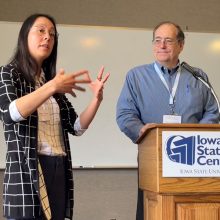
 HHRA Paper Analyzes Pesticide Dietary Risk in Individual Samples of Foods
HHRA Paper Analyzes Pesticide Dietary Risk in Individual Samples of Foods
One of the main sources of pesticide exposure is through the diet. It is critically important to understand pesticide residues in foods and how dietary risks have changed over time. Over the last 20 years HHRA’s Executive Director Charles Benbrook has developed an analytical database that quantifies the relative risk posed by residues in the diet. Known as the Dietary Risk Index (DRI), this system was created to help researchers compare risk levels across foods and pesticides, track changes in dietary risk over time, and assess the impact of where food is grown on residues and risk levels, as well as how production systems influence residues and risks (conventional versus organic). The DRI combines the results of United States and United Kingdom pesticide residue testing programs with data on food serving sizes and each pesticide’s chronic Reference Dose or Acceptable Daily Intake. Chronic DRI values are a ratio: the amount of residue in a serving of food relative to the maximum amount allowed by regulators. DRI values are a ratio: the amount of residue in a serving of food relative to the maximum amount allowed by regulators. Data generated by the DRI helps guide HHRA’s policy and public health by highlighting which food-pesticide combinations account for the most worrisome risks in the food supply. The DRI system initially reported aggregate values for a given food/pesticide combination. These values are derived from multiple individual samples of a food collected by regulatory agencies. For these DRI values, each individual number represents many servings of a given food. In 2022, HHRA added additional functionality the the DRI to report dietary risk in individual samples of a given food. The paper “Tracking pesticide residues and risk levels in individual samples—insights and applications,” which was published in the peer-reviewed journal Environmental Sciences Europe in July 2022, describes the methodology and data sources used to calculate these individual sample DRI values, and highlights some of the results and what they can tell us about residue levels in the global food supply. This is the first analytical system worldwide to provide this level of insight into residues in food. As the paper reports, “dietary risk levels are highly skewed. A large number of samples pose moderate, low, or very-low risks, and relatively few samples pose high or very-high risks.” Thus, regulators and researchers can use the DRI to pinpoint where pesticide dietary risks needs to be mitigated. Like all of HHRA’s peer-reviewed publications, this paper is open access and available free of charge. Click here to view the full text. Access DRI data here.
 Worrisome Trends in Herbicide Exposures Highlighted During HHRA Sponsored Session at APHA
Worrisome Trends in Herbicide Exposures Highlighted During HHRA Sponsored Session at APHA
On November 8th, HHRA-sponsored a 90-minute special session on “Herbicides and Birth Outcomes” at the annual meeting of the American Public Health Association (APHA) in Boston. Our session was among a very few exploring how food and farming systems impact public health. Four speakers, all of whom are HHRA science advisors, will described ongoing efforts to deepen understanding of whether the rising use of glyphosate, glufosinate, 2,4-D, and dicamba herbicides are causing or contributing to more frequent and/or more severe reproductive problems, adverse birth and developmental outcomes, or possibly other health problems. Check out the presentations from the session here. Dr. Cynthia Curl shared recent insights gained in a birth cohort study she leads at Boise State University. Glyphosate-based herbicides are among the pesticides her project is focused on. Daniele Mandrioli traveled to Boston from Belogna, Italy and the Ramazzini Institute to describe the Global Glyphosate Study (GGS) and share early findings. HHRA is among the funders of the GGS and benefits from scientific collaboration with the Ramazzini Institute at many levels. Marlaina Freisthler presented the findings of her paper in Environmental Health. The analysis draws on urine data generated by the Centers for Disease Control, coupled with 2,4-D herbicide use data from the USDA. The paper concludes that rising use of 2,4-D has brought about more frequent detections of 2,4-D in people’s urine. Phil Landrigan discussed why he and other scientists started The Heartland Study and the challenges that lie ahead in sorting out which herbicides, if any, are contributing to adverse birth and developmental outcomes. He also shared worrisome findings on trends in the levels of some herbicides in the urine of pregnant women in the Heartland. HHRA Biomonitoring Data Accurate estimates of exposure are essential ingredients in birth-cohort and other epidemiological studies. The most practical and affordable way to estimate exposures in a large birth cohort study like our Heartland Study is measuring levels of pesticide analytes in the urine of pregnant women (“analytes” include parent compounds and the metabolites that herbicides break down into). HHRA’s research goals include generating and compiling the data needed to quantify how herbicide exposure levels have changed since the early 1990s, before the commercial release of GMO herbicide-tolerant crop varieties. Such data are badly needed in light of the major changes occurring in herbicide-use patterns across the Midwest, changes brought about by the ongoing spread of dozens of herbicide-resistant weeds. To fill data gaps, HHRA has been testing urine samples from pregnant women in the Midwest using analytical methods capable of detecting 17 pesticide analytes. These include glyphosate and glufosinate, and dicamba and 2,4-D, four of the herbicides that corn, soybean, and cotton farmers have become far more reliant on in recent years. We now have glyphosate and glufosinate results from our analytical lab, the Centre de Toxicologie du Québec (CTQ) in Canada for around 700 hundred samples spanning 2010 through mid-2022. HHRA also has data from CTQ for another 13 pesticide analytes from about 150 samples collected from 2010 through spring 2022. These results include the levels of 2,4-D and dicamba in the urine of pregnant women. Use of dicamba and 2,4-D has been rising dramatically in the last decade. Further increases are likely because both herbicides are marketed in association with genetically engineered, herbicide-tolerant seeds. Rising reliance on dicamba and 2,4-D is worrisome because both are classified as “possible” human carcinogens by the International Agency for Research on Cancer, and multiple studies have reported heightened risk of reproductive problems and adverse birth outcomes among pregnant women exposed to relatively high levels of these herbicides. HHRA’s new biomonitoring data point to four preliminary findings. The average level of dicamba in the urine of pregnant women has increased over 3-fold just since widespread planting of dicamba-tolerant seeds began in 2017. Recent increases in farmer reliance on glufosinate (Liberty-brand herbicide) is now leading to possibly significant exposures to glufosinate and its primary metabolite 3-MPPA (3-MethylPhosphonicoPropionic Acid). Some good news — the levels of 8 out of 10 synthetic pyrethroid and organophosphate insecticide analytes have fallen over the last decade or so, including about a 50% decline in the primary metabolite of the organophosphate insecticide chlorpyrifos. Based on HHRA’s data spanning 17 pesticide analytes, the average person in the Midwest over the last two decades has been exposed on most days to at least 7 pesticide analytes. HHRA is highlighting the new data on dicamba and glufosinate because, to our knowledge, these are the first, significant datasets collected worldwide on levels of these herbicides in human urine. Such data are essential for regulators, farmers, and the pesticide industry to accurately quantify pesticide risks and when determining whether steps are warranted to reduce exposures. Why HHRA is Focusing on Pesticides and Birth Outcomes Food and beverages are the most common source of pesticide exposures for the general public. The highest levels of exposure are experienced by people who handle or apply pesticides, or live or work near where pesticides are frequently applied. If HHRA had the funding needed to test our urine samples for all, or even most widely used pesticides, the data would likely show that most people are exposed to 10 or more pesticides on a near-daily basis. We know that herbicide use and exposures are rising steadily, but very little research has been carried out since the 1990s to track possible impacts on reproductive health and birth outcomes. This is why we started the Heartland Study. As of early November, we have enrolled 340 pregnant women in The Heartland Study (HS). About one-half have given birth, marking the end of Phase 1 in the HS protocol for these women and infants. By the end of 2024 or early 2025, we hope to have enough mother-infant pairs through Phase 1 to begin publishing clinical findings. But now, HHRA is able to share important new data and insights on changes in herbicide exposure levels. It is likely that most herbicide-induced adverse birth and developmental outcomes, and other health problems, will rise or […]
 An Update from HHRA
An Update from HHRA
HHRA’s team has been making lots of progress in our important work at the intersection of food, farming, and health. We started the spring/summer of with a bang as we brought HHRA on the road to the Public Health Conference of Iowa in May. At the same time, farmers across the Heartland were preparing fields for planting and carrying out early weed management practices. The end of spring into the early summer months (March-July) is the peak herbicide spray window in the Midwest, which in turn means sometimes higher exposures for families in the Heartland living near corn and soybean fields. Capturing data from our flagship project The Heartland Study during this window is essential to better understand how pregnant women in the Heartland may be impacted by herbicide exposures. Heartland Study Progress We have been successfully enrolling 15 or more pregnant participants each month into The Heartland Study for the past several months, with almost 300 Mother-Infant Pairs enrolled so far. Our newest study site at Gundersen Medical Center in La Crosse, Wisconsin should begin enrolling pregnant women in September. Welcome to the team, Gundersen! We recently sent the first batch of Heartland Study urine samples to be evaluated by the Center for Toxicological Research (CTQ) in Quebec, Canada, our analytical partner for herbicide exposure assessments. To our knowledge, no one has run any urine sample tests with a method capable of quantifying low-levels of dicamba. A first batch of Heartland Study urine samples have been sent to our analytical lab, CTQ in Quebec, Canada. At HHRA’s request, the great team at CTQ has developed a new method that detects dicamba, 2,4-D and 11 other pesticide analytes in urine. Our Heartland Study will include the first large-scale study of dicamba in human urine conducted anywhere in the world. Previously there was no practical, vetted method for quantifying dicamba in urine, which is why there are no data on dicamba in urine accessible to regulators or public-health scientists. This is a consequential data gap given that the use of dicamba has risen more rapidly in the last five years than any other herbicide. “The new dicamba method may be one of the most significant enhancements in herbicide analytical chemistry methods in decades,” says HHRA Executive Director Charles Benbrook. Looking Ahead Boston here we come! We are exited to be hosting a session at the American Public Health Association annual conference this November with some of our Alliance partners: • Cynthia Curl: Associate Professor, School of Public Health and Population Science Director, Center for Excellence in Environmental Health & Safety, Boise State University • Daniele Mandrioli, MD, PhD, Director Cesare Maltoni Cancer Research Center, Ramazzini Institute, Bologna, Italy • Marlaina Freisthler, JD, MPH, George Washington University • Philip Landrigan, MD, MSc, FAAP, Director, Global Observatory on Planetary Health, Boston College The special 90-minute session during the APHA annual meeting will discuss recent advances in methods available to epidemiologists to assess linkages between herbicide use and exposures and adverse birth outcomes, reproductive problems and chronic illness. The experts will provide an overview of ongoing, prospective birth-cohort studies and toxicological investigations. The panel will describe how integration of research tools and insights from multiple disciplines can accelerate progress in understanding how herbicide exposures may impair sperm quality, reduce fertility, increase adverse reproductive outcomes, and trigger microbiome dysbiosis, neurodevelopmental deficits, and chronic disease. We hope to stress the importance and the need for new investments in biomonitoring and larger birth-cohort studies, coupled with developmental assessments of newborns and children through adolescence and into adult life. We are looking forward to bringing our work to the broader public health community!
 Better Late Than Never: Farmers, Ag Scientists and the Public Health Community Come Together in Iowa and Pay Tribute to a Sustainable Ag Pioneer
Better Late Than Never: Farmers, Ag Scientists and the Public Health Community Come Together in Iowa and Pay Tribute to a Sustainable Ag Pioneer
By: Audrey Tran Lam and Chuck Benbrook “I have been trying to bring together farmers and the public health community in Iowa for my whole career and tonight it finally happened.” This is what one attendee told the HHRA team at the end of our May 3, 2022 reception in Ames, Iowa. Our reception was a tribute to sustainable ag pioneer, Fred Kirschenmann. It was sponsored by HHRA, Practical Farmers of Iowa, and the Farming for Public Health program (FFPH) at the University of Northern Iowa. HHRA Board member, Audrey Tran Lam, manages the FFPH and helped organize HHRA’s participation in the 2022 annual Public Health Conference of Iowa (PHCI). The epicenter of herbicide-intensive weed management in the Heartland seemed the right place to debut HHRA science, and the beginning of the herbicide spray season a fitting time to do so. The pictures accompanying this blog capture the meeting’s good energy and fellowship. During the conference a steady flow of public-health practitioners stopped by the HHRA booth and engaged our dynamic duo, Grace Koch and Molly Funk, in dialogue about HHRA and the Heartland Study. Many of these public health professionals had either historic roots in farming, or were farmers themselves. The genuine interest in bringing a public health lens to agricultural practices in Iowa was inspiring. Interactions at our booth sparked discussions about farming, public health, climate change, soil health, environmental justice and more. We handed out HHRA and Heartland Study materials to public health professionals from all backgrounds and specialties. A bagful of certified organic mini-chocolate bars disappeared as fast as Grace and Molly could replenish the supply! Many people stopping by our booth shared personal stories about times they were sprayed with pesticides, or smelled that smell in the air, or wondered whether their water was safe to drink. Others told us about a family member (or members) or friends with cancer. One woman told us about a farm family she knew in which three members had been diagnosed with the same cancer over a two-year period. They lived on a farm with pesticides in the well water. At our booth, questions were raised almost non-stop about whether pesticides might be playing a role in some of the health problems that seem on the rise in Iowa. Exposures through drinking water came up over and over. As important as water is as a route of herbicide exposure, we were struck by the fact that very few people were aware that many Iowans, and most people in farm country, are breathing in air laced with a pinch of volatile herbicides on many days from mid-June through August, and have been doing so since 2017. During the HHRA and FFPH co-led concurrent session, the Iowa public-health community was understandably troubled upon hearing some of what we had to say, but many expressed gratitude that Iowa’s #1 industry had made it onto the agenda of their state’s annual meeting of public-health practitioners. For most of the ~400 people at the May 3-5 meeting, it was the first in-person professional meeting since Covid shut down travel and large gatherings. HHRA was the “Keynote Sponsor” for the meeting. It was a great investment that provided us the opportunity to introduce HHRA and the Heartland Study to conference attendees at the beginning of each day’s plenary session. On day one, Chuck Benbrook covered HHRA and HS basics and invited all attendees to our reception that evening — the tribute for Fred Kirschenmann. Chuck also pitched our substantive session Wednesday morning entitled “Iowa-Centric Public Health Challenges in the Wake of Rising Herbicide Use.” And – impressing his staff – he did so in just over his allotted three minutes! Audrey Tran Lam opened the plenary on day two with a deeper dive on why she was pleased to introduce her Iowa public-health colleagues to the Heartland Study and HHRA science, and why she hoped this would be the beginning of an information-rich and sustained conversation. A Special Tribute The highlight of the trip, though, was the reception and tribute for Fred Kirschenmann. Fred is well into his 80s and retired last year after nearly 25 years at Iowa State University. For many of those years, Fred was the Director of the once-world renown Leopold Center for Sustainable Agriculture at Iowa State University, where the conference was held. Despite the Leopold Center’s many valuable, practical, and appreciated contributions to farmers and farming in Iowa, the political powers-that-be in Iowa incrementally dismembered the Leopold Center, diverting and/or cutting funding and staff positions, ending programs and driving away faculty that wanted to work with the Center. Now, there is no Leopold Center and Iowa State University — and Iowa — is the lesser for it. Upon Fred’s retirement from ISU there was no celebration honoring his contributions to the institution, to the many students and faculty who worked on Leopold Center projects, and to people across the country and around the world who benefitted for a half-century from Fred’s unselfish sharing of knowledge and insight, connections and wisdom, all deep-rooted and time-tested. It was an honor for HHRA, PFI and the FPHP to host the tribute for Fred. Many of his friends and colleagues at ISU attended and took advantage of the opportunity to tell Fred how deeply his work and fellowship was valued and appreciated. In addition to the familiar faces at our reception, there was an impressive turnout from national and local public and environmental health officials interested in learning more about the mark Fred left on sustainable agricultural practices, as well as the many ways in which farming impacts the health of the communities they serve. Fred’s message at the close of his remarks was classic Fred. There is still much work to do and the only way to tackle it is through new connections, cooperation, and community. Three words that sum up a life’s work well done and also capture, succinctly, why we traveled to Iowa.
 Extracting New Insights from Old Data on a Pressing Concern — The Rapid Rise in Reliance on 2,4-D Herbicide in the Heartland
Extracting New Insights from Old Data on a Pressing Concern — The Rapid Rise in Reliance on 2,4-D Herbicide in the Heartland
By: Marlaina Freisthler* Leveraging existing research is central to HHRA’s strategy to accelerate progress in answering contemporary questions about the health impacts of pesticide exposures. One of HHRA’s goals is to draw on existing datasets to glean new insights into pesticide exposure levels, trends, and health impacts. We use pesticide levels in human urine, known as biomarkers, as our primary method of estimating exposure. As a doctoral student in Environmental Health at George Washington University, I have had the opportunity to work with a team of distinguished researchers to publish a paper in Environmental Health reporting new insights from one such effort to use existing datasets to answer new questions. We report clear associations between trends in the use of the herbicide 2,4-D since 2001 and the frequency of exposures to 2,4-D over time and across the U.S. population. I receive generous doctoral funding sponsored by HHRA to support my research on herbicide exposures and their health impacts, including the costs to publish my research. In our research leading to this new publication, our team studied the percent of the population with detectable levels of 2,4-D in their urine across 6 cycles of the National Health and Nutrition Examination Survey. NHANES is a large and valuable public dataset providing information about the health and environmental exposures experienced by a representative sample of Americans. We were able to evaluate data on 14,395 people with available 2,4-D exposure biomarker levels who participated in NHANES between 2001 and 2014. Our core question was simple and important: Do trends in 2,4-D herbicide use impact trends in 2,4-D exposure levels? To conduct our analysis, we extracted data on 2,4-D herbicide use from HHRA’s Pesticide Use Data System (PUDS). All data in PUDS come from annual pesticide use surveys conducted by the U.S. Department of Agriculture. By combining 2,4-D exposure data from NHANES with 2,4-D use data from PUDS, we found: Around 33% of the people in NHANES had detectable levels of 2,4-D in their urine. The frequency of human exposures to 2,4-D rose from around 17% in 2001-2002 to almost 40% at the peak in 2011-2012. Increasing agricultural use of 2,4-D was clearly associated with increasing odds of detecting of 2,4-D in people’s urine. The odds for increasing exposure detections were more than twice as high for children aged 6-11 compared to adults; The odds for increasing exposure detections were also twice as high for women of childbearing age as for men in the same age group. We are particularly concerned by the last two findings noted above. Some physical and neurological processes that are still developing in fetuses, infants, and young children are far more susceptible to harmful impacts from chemical exposures. This means that women of childbearing age and young children are vulnerable segments of the U.S. population when exposed to chemicals like 2,4-D. This is especially important because NHANES includes only a small number of pregnant women and has not been used to sample children under age 6 for 2,4-D biomarkers, though infants and toddlers often demonstrate even higher levels of exposure to some chemicals than older children. We want to know why women and children are having these more extreme increases in detections of exposure to 2,4-D, in the hope that answers will lead to actionable steps to reduce exposures to these most vulnerable segments of the population. Answering our core question is particularly important now, as use of 2,4-D and other herbicides rises sharply across the country, and especially in the Midwest. This is why our scientists are measuring 2,4-D exposure as part of HHRA’s flagship project, The Heartland Study. Projections indicate that around two-thirds of the soybean seed sold to farmers in the next few years will be genetically engineered to tolerate both 2,4-D and glyphosate (i.e., Roundup). We expect that reliance on these types of “next-generation” seeds engineered to have multiple herbicide tolerances will continue the sharp increases in use of 2,4-D and other herbicides. In fact, HHRA projects that by 2030, 2,4-D use in the Heartland will exceed glyphosate use, as shown in the dynamic data visualization below. Our study results indicate that with these increasing uses of 2,4-D, there could very likely be increased population exposures, which our research team is continuing to study. Other ongoing HHRA-funded research projects are exploring the changes in other herbicide exposure levels over time in Midwestern women and the impacts of herbicide exposures on birth outcomes and children’s development. Below you will find the George Washington University press release announcing publication of our study, a link to access the paper, and the dynamic graphic showing expected increases in 2,4-D use through 2030. *Marlaina Freisthler is a PhD student and researcher at the George Washington University. Her graduate fellowship is supported by HHRA. Resources Freisthler, Marlaina S., Robbins, C. Rebecca, Benbrook, Charles M., Young, Heather A., Haas, David M., Winchester, Paul D., & Perry, Melissa J.; “Association between increasing agricultural use of 2,4-D and population biomarkers of exposure: findings from the National Health and Nutrition Examination Survey, 2001–2014;” Environmental Health, 2022, 21(1); DOI: 10.1186/s12940-021-00815-x. George Washington University press release Dynamic data visualization on 2,4-D projections 2,4-D papers in HHRA’s bibliography Media coverage on the paper: The Hill, February 10, 2022, “One in three Americans exposed to toxic weedkiller: study” The Guardian, February 10, 2022, “One in three Americans have detectable levels of toxic weedkiller, study finds” Tyler Morning Telegraph, February 10, 2022, “1 in 3 People Now Exposed to a Harmful Pesticide”
Three Medical Facilities Now Enrolling Women into The Heartland Study

Pregnant women in parts of the Midwest can now enroll in our flagship project The Heartland Study to help us understand if rising herbicide exposure is impacting the health of moms and babies.

Moms-to-be can currently enroll at Franciscan Health Hospital and the University of Indiana Medical Center in Indianapolis, IN and at the Gundersen Health System in La Crosse, WI.
We are excited to be underway and enrolling women into The Heartland Study and hope to grow our reach to more partner hospitals in 2021! You can help by donating to support our cutting-edge science.
